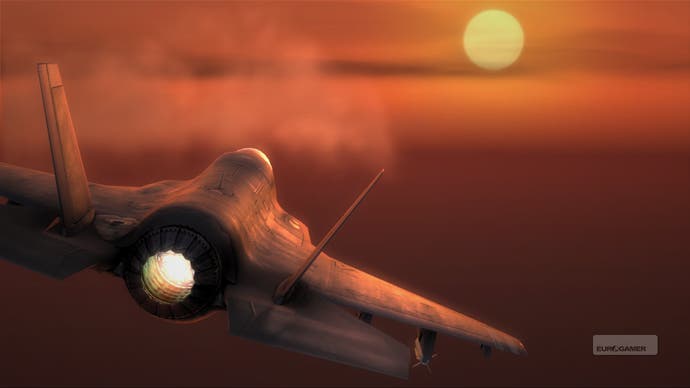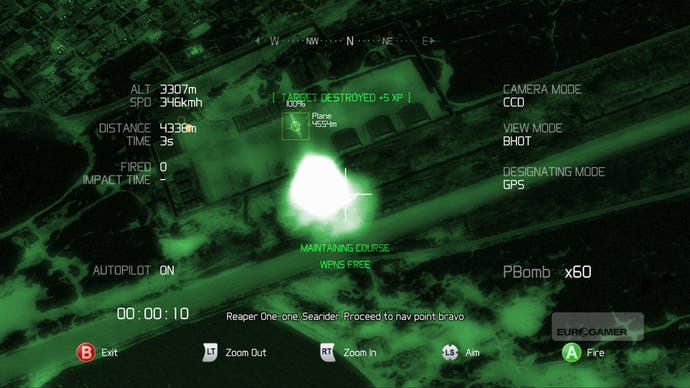Tom Clancy's H.A.W.X. 2
A wing and a prayer.
Air combat games are contradictory beasts. They offer the most freedom of movement of any game genre, and yet are constrained by the emptiness of their aerial arenas into gameplay that can quickly become monotonous if you're not passionately excited by military technology. Fly to waypoint, shoot down enemies, rinse, repeat.
H.A.W.X. 2 seems uncomfortably aware of its limitations and so goes out of its way to break up the aerial dogfighting. The trouble is that in doing so it risks alienating the niche audience that is perfectly happy with lots of aerial dogfighting, without offering enough to attract a more mainstream audience.
Following on from the first game, which had a rather bumpy landing back in March 2009, the game takes place in the near future setting shared with several other Tom Clancy titles. There are references to these overlapping events, though nothing that will confuse anyone unfamiliar with the tangled web of Clancy gaming, but the fidgety story still boils down to an unsatisfying hodgepodge of stolen nukes something something insurgency something Russia something Middle East.
Much like brawny Clancy wannabe Modern Warfare 2, you hop between story strands as the plot hiccups along, following American, Russian and British pilots as they run missions that are clearly supposed to stop a Very Bad Thing from happening, even if you're never entirely clear what that Very Bad Thing will be.

Despite this narrative fog, the early levels do a great job of building pivotal moments into a flight game framework, putting you in the cockpit for scripted events that slip seamlessly into gameplay. It doesn't take long for this creativity to subside, however, and before long you're following waypoints and engaging bogeys like every other air combat game.
The game uses Clancy's obsession with technology to break things up, so at various points you'll find yourself engaged in aerial espionage. Hovering over cities and battlefields with unmanned recon drones, these remote spybots cast the world in grainy green and black night vision, and ask you to scan buildings to locate prisoners, fire IR tracers to mark targets, track cars belonging to arms dealers, or rain rocket death down on insurgent positions. In gameplay terms, it boils down to fairly simple point-and-click stuff, but when used intelligently this shift in perspective moves the game along in a way that shooting down five more enemy fighters never can.
One good example comes when you're placed in control of the weaponry on an AC-130 Gunship and supply aerial cover for a rescue mission on the ground. So, yes, it's a turret mission. And an escort mission. But it works. You can zoom right in and see the tiny figures you're helping, and the level strikes an excellent balance between giving you enough firepower to feel confident in your chances of victory and throwing enough complications into the mix that it never feels like it's handed to you on a plate. Fending off convoys as tiny soldiers make a desperate dash for freedom, on foot and in vehicles, is surprisingly exciting stuff.

It's essentially a military shooter from an RTS viewpoint, and these sporadic interludes may well annoy those who prefer their flight games to focus entirely on flight. They're certainly most fun the first time you encounter them, becoming more intrusive and less novel with each replay, which suggests H.A.W.X. might not be the best franchise to use them in.
Enemy AI has been greatly improved from the first game, which is both a blessing and a curse. It makes each engagement all the more rewarding, as even on the easiest setting you still have to compete with enemy pilots who will dodge, swoop and use flares and chaff to escape your attention. That, in itself, is fantastic. When you're up against a strict countdown, and still have 10 more enemies to down, it becomes a problem.


